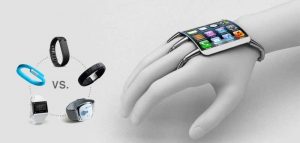With the advances made in wearable medical device technology and the proliferation of such devices, patients today are able to collect an incredible amount of health-related data—but how much of it is actually useful to physicians? It can be tempting to think of more data as always being valuable to diagnosticians, but there are major hurdles to processing the vast amount of information that such devices can generate.
As noted by Bharat Rao, the data and analytics leader for KPMG’s Healthcare and Life Science practice, the answer isn’t so simple: “There are all of these devices that have the potential to provide useful patient data, particularly for patients who have chronic medical conditions. But there’s a lot of data out there. Probably too much data, in some senses. So while there is likely to be a few nuggets of value in all that information, the potential distraction in trying to deal with it all is so large that many wonder if it’s worth it.”
Part of the problem is that it isn’t sufficient that physicians have access to patients’ wearable device data; they need a way to process it. As Rao points out, many healthcare professionals are already feeling frustrated with the way that their EHR systems present information; in order to make patient-provided data useful from a diagnostic perspective, some sort of algorithm needs to be used that “will take all this data, make sense of it, and then present the valuable nuggets of information to the physician in a way that fits in with their workflow.”
So what’s the solution to weeding through this proliferating healthcare data? Partially, suggests primary care physician and director of digital health for general internal medicine at UC San Francisco Ida Sim, doctors can use the growing ability of patients to monitor their healthcare data to boost patient engagement and thus improve patient compliance and self-management.
This also means working with individual patients to understand their specific medical needs and curate the incoming information, says Sim.
Microsoft Healthcare head of innovation and health equity Jim Weinstein notes that ultimately the benefits provided by self-collected patient data can add up, but the approach needs to be strategic: “Physicians are generally resistant to things that could potentially harm their patients or interfere with their ability to care for them. Therefore, any strategy involving this kind of data needs to involve the health system, doctors, nurses, other providers, staff and the patients themselves as we move forward. These technologies should be augmentative, to enhance the incredible efforts of physicians and nurses who dedicate their lives to those most in need. That is a marriage worth pursuing.”























